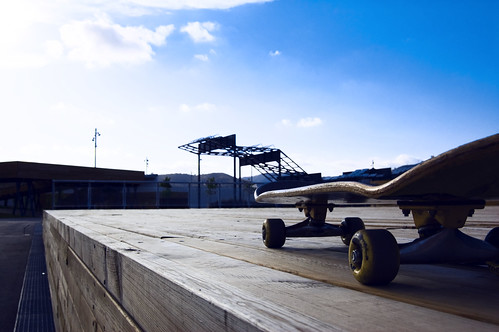
After having learned about shutter speed and ISO settings, now we're going to take a look at the aperture.
The aperture setting is the size of the opening in the lens.
Every lens has a couple of blades, called iris, that are put together to regulate the light that gets through, depending on the aperture setting used.
The aperture is indicated in the camera as the f number. A high f number will represent a small aperture while a small f number will represent a big one. This might sound counterintuitive but is easier to understand if we imagine the f number in the formula 1/f. The higher the f number the smaller the end result.But enough with the technical details, what is aperture good for?
Tweaking the aperture settings will not only control the light intake, but will also
 control the size of the depth of field (In short, the depth of field is the part of the image that is in focus). This will allow us to use the depth of field that we find appropiate for our shot. Imagine for example that we are taking a portrait picture. We want everything in the background to be out of focus, so that it doesn't distract from the main subject. In order to achieve that we will use a small f number, that will result in a big aperture, creating a shallow depth of field.
control the size of the depth of field (In short, the depth of field is the part of the image that is in focus). This will allow us to use the depth of field that we find appropiate for our shot. Imagine for example that we are taking a portrait picture. We want everything in the background to be out of focus, so that it doesn't distract from the main subject. In order to achieve that we will use a small f number, that will result in a big aperture, creating a shallow depth of field.If we were shooting a landscape for example we would do the exact opposite so that all the parts of the image stayed in focus.

The maximum aperture setting will depend from each lens and is an important factor to have in mind when buying new gear, prime lenses, those without zooming possibilities, are the ones which allow higher apertures. It is easy to find cheap prime lenses allowing for f1.8 apertures and more expensive ones even allow for f1.4 or f1.2. Zooming lenses instead have smaller apertures and their maximum aperture varies depending on the focal length used. The 18-55mm kit lens from the D40 for example will allow for a f3.5 aperture at 18mm but only f5.6 at 55mm. Zooming lenses with bigger apertures are only found in the professional level and are used by sport photographers for being able to capture fast shots even in low light.
Summing up, rising the aperture setting will let in more light while making the depth of field smaller and the maximum aperture depends on the type and the quality of the lens.
No comments:
Post a Comment